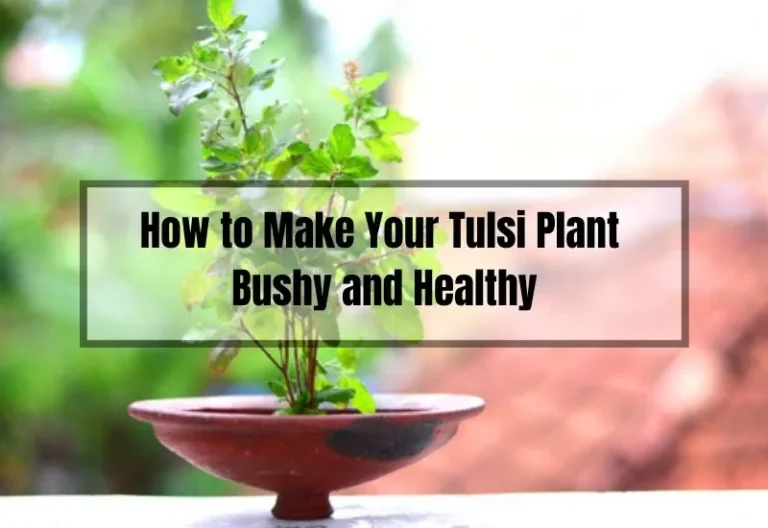Devil’s Backbone Plant: A Dangerous Poisonous Threat to Humans
Interested in adding greenery to your home or garden? Beware of the Devil’s Backbone, also known as the Mother of Thousands. This seemingly harmless plant is poisonous to humans and pets due to its milky sap containing toxic diterpenes.
Skin contact can cause irritation, while ingestion can lead to nausea, vomiting, and diarrhea. Even a small amount of sap can be harmful, so it’s best to avoid contact. If exposed, wash the affected area with soap and water immediately. In case of ingestion, seek medical help. Enjoy this plant safely.
Key Takeaways
- The Devil’s Backbone plant is poisonous to humans and pets due to the toxic compounds in its milky sap.
- Contact with the sap can cause skin irritation, while ingestion can lead to more serious symptoms like nausea and vomiting.
- To handle the plant safely, avoid touching the sap with bare skin and seek medical attention if ingested.

Devil’s Backbone Plant Poisonous to Humans
This plant is popular for its unique shape and easy-to-care-for nature. However, did you know that it can also be poisonous to humans? In this section, we will explore the potential dangers of this plant and how to stay safe when handling it.
The Devil’s Backbone plant contains a toxic substance called bufadienolides. These substances are known to cause a range of symptoms in humans, including nausea, vomiting, and diarrhea. In severe cases, it can even cause heart problems and be fatal. It’s important to note that the toxicity of the plant can vary depending on the species and the amount ingested.
One of the most common ways that people come into contact with the Devil’s Backbone plant is through accidental ingestion. This can happen if the plant is mistaken for a food source or if someone unknowingly comes into contact with the sap. It’s important to be aware of the potential dangers of this plant and to take steps to avoid accidental ingestion.
If you do come into contact with the Devil’s Backbone plant, it’s important to seek medical attention right away. Symptoms of poisoning can appear quickly, and prompt treatment can be critical in preventing serious complications. In addition, it’s important to avoid handling the plant without proper protective gear, such as gloves and a mask.
How is the Devil’s Backbone Plant Poisonous?
So, you want to know how the Devil’s Backbone plant is poisonous to humans? Well, let me tell you, this plant may look pretty, but it can be dangerous if not handled with care.
The Devil’s Backbone plant contains a milky sap that is toxic to humans and animals. This sap contains a compound called diterpene esters, which can cause skin irritation, eye irritation, and even blindness if it comes into contact with your eyes.
If ingested, the sap can cause nausea, vomiting, diarrhea, and abdominal pain. In severe cases, it can even lead to death. So, it’s important to keep this plant away from children and pets.
It’s also important to note that the sap can be airborne, meaning that if the plant is cut or damaged, the sap can be released into the air and cause respiratory problems if inhaled. So, it’s important to wear gloves and protective eyewear when handling this plant.
Here are some key points to keep in mind about the Devil’s Backbone plant’s toxicity:
- The sap of the Devil’s Backbone plant is toxic to humans and animals.
- The sap contains diterpene esters, which can cause skin and eye irritation, as well as respiratory problems if inhaled.
- Ingesting the sap can cause nausea, vomiting, diarrhea, abdominal pain, and even death in severe cases.
- It’s important to keep this plant away from children and pets and to wear protective gear when handling it.
Now that you know how the Devil’s Backbone plant is poisonous, be sure to handle it with care or avoid it altogether. It’s always better to be safe than sorry when it comes to toxic plants.
What are the Effects of the Devil’s Backbone Plant Poison?
So you’ve heard that the Devil’s Backbone plant is poisonous to humans, but what exactly are the effects of this poison? Let’s take a closer look.
The Devil’s Backbone plant contains bufodienolides, which can cause a range of symptoms if ingested or if the sap comes into contact with your skin or eyes. These symptoms can include vomiting, diarrhea, and an abnormal heart rhythm in rare cases. If you suspect that you or someone else has ingested any part of the Devil’s Backbone plant, it’s important to seek medical attention immediately.
But what if you simply come into contact with the sap of the plant? Even touching the sap can cause redness, inflammation, and blistering on your skin. If the sap dries or thickens, you may not be able to remove it with plain water. Instead, you’ll need to use milk or soap and cool water to remove it.
If the sap comes into contact with your eyes, you may experience a gritty sensation. It’s important to flush your eyes with cool water for at least 15 minutes and seek medical attention if the irritation persists.
Overall, it’s clear that the Devil’s Backbone plant is not something to be taken lightly. If you come into contact with the plant or suspect that you’ve ingested any part of it, seek medical attention immediately to ensure your safety.
How to Handle the Devil’s Backbone Plant Safely?
Now that you know the Devil’s Backbone plant is toxic to humans, it’s important to know how to handle it safely. Here are some tips to keep in mind:
- Always wear gloves when handling the plant. The sap can cause skin irritation and even blistering, so it’s best to avoid direct contact with the plant.
- If you do come into contact with the sap, wash the affected area with soap and water immediately. If skin irritation occurs, apply a topical cream or ointment to soothe the skin.
- Keep the plant away from children and pets. The Devil’s Backbone plant is toxic when ingested, so it’s important to keep it out of reach of curious little hands and paws.
- If you have pets, be sure to supervise them around the plant. If you notice any signs of poisoning, such as vomiting or diarrhea, contact your veterinarian immediately.
- When pruning the plant, use clean, sharp pruning shears. This will help prevent damage to the plant and minimize the amount of sap that is released.
- After pruning the plant, dispose of the cuttings carefully. Do not compost them, as the sap can still be toxic even after the plant has been cut.
- If you plan on repotting the plant, be sure to wear gloves and handle the plant carefully. The roots of the Devil’s Backbone plant can be quite fragile, so it’s important to avoid damaging them.
By following these tips, you can safely handle the Devil’s Backbone plant without putting yourself or others at risk.
Remember to always wear gloves, keep the plant away from children and pets, and dispose of cuttings carefully. With a little care and attention, you can enjoy the unique beauty of this striking succulent without any worries.
Tips for Safely Growing and Maintaining the Plant
To safely grow and maintain your devil’s backbone plant, follow these tips:
- Keep the plant out of reach of children and pets to avoid accidental ingestion or contact with the milky sap.
- Wear gloves when handling the plant, especially when trimming or repotting, to prevent skin irritation from the sap.
- Dispose of trimmed plant parts responsibly and securely to prevent accidental exposure.
- Educate your family members and visitors about the potential dangers of the plant so they can take appropriate precautions.
Frequently Asked Questions (FAQs)
How toxic is the devil’s backbone plant to humans and pets?
The devil’s backbone plant is considered moderately toxic to both humans and pets. If ingested, it can cause various symptoms ranging from mild to severe, depending on the amount consumed.
Can you touch the green leaves without fear of toxicity?
Yes, you can safely touch the green leaves of the devil’s backbone plant. Just make sure not to ingest them or come into contact with the milky sap.
What should I do if I come into contact with the plant’s milky sap?
If you come into contact with the milky sap, wash the affected area thoroughly with soap and water to remove any residue. If irritation persists or worsens, seek medical attention.
Is it safe to grow the devil’s backbone plant in a home with children and pets?
While it’s possible to grow the devil’s backbone plant in a home with children and pets, you must take precautions to keep it out of reach and educate your family members about its potential dangers.
Are there any similar plants with less toxicity?
If you’re looking for a similar plant with less toxicity, consider the Christmas cactus or the spider plant. Both are visually appealing, low-maintenance options that are safe for humans and pets.
Conclusion
In conclusion, the devil’s backbone plant, while beautiful, comes with its share of risks due to its toxicity to humans and pets.
However, by following the appropriate safety measures and handling the plant responsibly, you can still enjoy its unique appearance in your home or garden.
Remember to educate your family and visitors about the plant’s potential dangers and take the necessary precautions to ensure a safe environment for everyone. Happy gardening!





